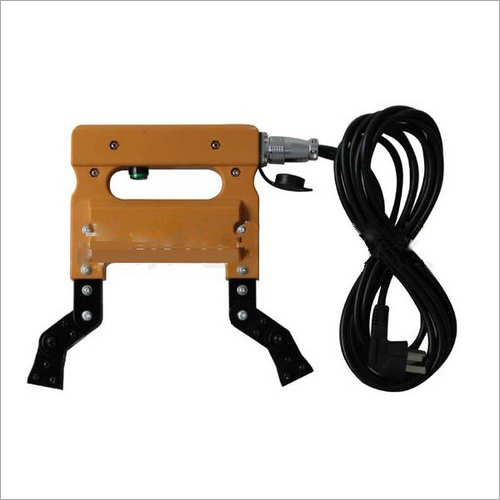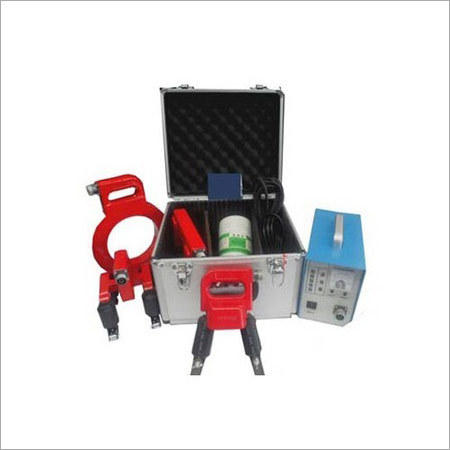Magnetic Particle Detector
113000 INR/Unit
Product Details:
- Product Type Magnetic Particle Detector
- Size 208x52x146 mm
- Weight 3.1 Kilograms (kg)
- Color Black & Mud Colour
- Accuracy 100 %
- Click to View more
X
Magnetic Particle Detector Price And Quantity
- 1 Unit
- 113000 INR/Unit
Magnetic Particle Detector Product Specifications
- 3.1 Kilograms (kg)
- Black & Mud Colour
- 208x52x146 mm
- Magnetic Particle Detector
- 100 %
Magnetic Particle Detector Trade Information
- 1000 Unit Per Day
- 1 Week
Product Description
Magnetic Particle Detectors are the only ones that self-balance. While these are frequently used in the field and may be used to solve a variety of on-site particle testing concerns, they do have limitations in terms of weight, material type, and size. Additionally, the majority of traditional testing techniques require the equipment to be calibrated or modified before to use. The new integrated technology of our device enables us to study materials varying from rubber to steel without the requirement for equipment calibration. We developed particle detector range that capable of measuring various materials under load independently.
Magnetic Particle Detectors Specifications:
1. Model: MJE-12/220
2. Power Supply: AC 220 V 50 Hz or DC 12 V
3. Charging Power: AC 220 V /50 Hz
4. Working Current: AC 1.4 A/DC 1.7 A
5. Charging Time: 8-15 hrs
6. Battery Life: Over 6 hrs
7. Duty Cycle: 1 min. on/1 min. off
8. Magnetic Distance: 50-200 mm
9. Lifting Power: A C >5.5 kg D C >26 kg
10. Dimension Yoke: 208 52 146 mm
11. Standard Delivery: Yoke 1 PCS
12. Battery Bag: 1 PCS
13. Battery: 1 PCS
14. Power Cable: 1 PCS
15. Fuse: 2 PCS(5 A)
16. Weight: 3.1 kg
17. Frequency: 50 Hz
Magnetic Particle Detector FAQ:
Q: What is a magnetic particle detector?
A: A magnetic particle detector is a non-destructive testing (NDT) method used to detect surface and near-surface flaws in ferromagnetic materials.
Q: How does a magnetic particle detector work?
A: The process involves magnetizing the test object and then applying ferromagnetic particles (usually iron filings or magnetic powder) to the surface. If there are any surface or near-surface defects, the particles will be attracted to and accumulate around the defect, making it visible under proper lighting conditions.
Q: What types of defects can a magnetic particle detector detect?
A: Magnetic particle testing is primarily used to detect surface cracks, seams, laps, inclusions, and other discontinuities that are parallel to the direction of magnetic flux.
Q: What materials can be tested using magnetic particle detection?
A: Magnetic particle testing is typically used on ferromagnetic materials such as iron, steel, nickel, and their alloys.
Q: What are the advantages of magnetic particle testing?
A: Magnetic particle testing is relatively quick, cost-effective, and can detect both surface and near-surface defects. It can be performed on large or complex-shaped objects and can be used for both ferrous and non-ferrous materials.
Q: What are the limitations of magnetic particle testing?
A: Magnetic particle testing is limited to ferromagnetic materials. It cannot detect defects that are not parallel to the direction of magnetic flux, and it may not detect very small or deeply buried defects.
Q: What are the safety considerations when performing magnetic particle testing?
A: Safety precautions include ensuring proper ventilation when working with magnetic particles, wearing appropriate personal protective equipment (PPE), and following proper procedures for handling and disposing of magnetic particles.
Q: Can magnetic particle testing be automated?
A: Yes, magnetic particle testing can be automated using specialized equipment such as magnetic particle inspection machines, which can improve efficiency and consistency in testing.
Q: Is magnetic particle testing suitable for all applications?
A: While magnetic particle testing is widely used, it may not be suitable for all applications. Factors such as material type, surface condition, and the size and orientation of defects should be considered when determining the appropriate testing method.
Q: How is the sensitivity of magnetic particle testing determined?
A: The sensitivity of magnetic particle testing depends on various factors including the strength of the magnetic field, the type and size of magnetic particles used, and the surface condition of the test object. Sensitivity can be adjusted by modifying these parameters.
Enter Buying Requirement Details
 English
English Spanish
Spanish French
French German
German Italian
Italian Chinese (Simplified)
Chinese (Simplified) Japanese
Japanese Korean
Korean Arabic
Arabic Portuguese
Portuguese


 Call Me Free
Call Me Free